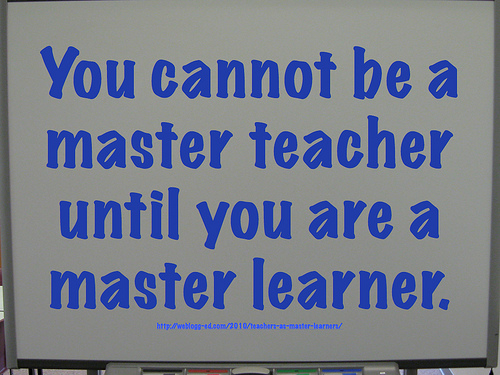This is a picture of me on a coast of Newfoundland. I was trying to write about some of my experiences in a new culture (yes, I believe Newfoundland has a separate culture) and quietly capture my thoughts and the beauty through drawings in my journal.
I think it is essential to being a teacher that we learn to build caring and trusting relationships (Noddings, 2005). This includes listening and dialogue, but it also must include critical thinking and reflection in order to effectively make connections between subjects/ disciplines, our own lives, and the lives of students. Journaling, for example, is a safe and useful tool for teachers and students to record and document their own thoughts and ideas, to work through problems, to deepen our existing knowledge and explore new ideas, find what is working, and create future goals. The popular education through caring approach described in our Glowacki-Dudka et. al (2018) reading advocated for critical reflection in our teaching practice as well. (p. 66)
Not to be confused with inquiry-based learning (although I think that has a place as well), inherent in the activity of critical theory, critical thinking and critical reflection is the idea of lifetime continuous learning, which was advocated by Jane Addams (Lewis, n.d.). Journaling is a fairly cheap way to narrate and document our own stories and ideas, and engages us to reach further inward (into ourselves) and outward (into the community/ world)
The theoretical framework of Teacher Critical Inquiry helps us to situate our own values in teaching and learning (in place and time), and better understand the experiences and impacts of our teaching for our students. Teachers must always be learning about their students to ensure responsiveness to students’ needs, learning, and connecting to educational theories. It is helpful in praxis to consider our teaching influences, who we are influencing, and how or what kind of influence we have to those in our care. This makes teaching and curriculum more intentional, relevant, meaningful, and purposeful, and ultimately helps to improve student success.
Critical thinking about what?
- Assessments, pedagogy (what is working? what is engaging students?)
- Resources (equity vs. equality), assumptions (about former knowledge of students, about attitudes, about students’ mental and physical needs…)
- Classroom narratives (whose voice are we hearing the most? who is afraid to speak up?)
- Classroom culture/ environment (are students feeling safe? respected? comfortable? is there enough quiet spaces? are there enough opportunities to move? is the classroom orderly? clean? – see Montessori’s beautiful and orderly classroom!)
- Relationships (is there a relationship of care and trust between teacher and students? between teachers in the school? Teachers and administrators? Teachers and parents?)
- Connections to other subjects/ disciplines (not just as a way to enrich the student experience through the arts, for example, but to explore the relevance or significance of a subject further)
Note: one year a principal decided that I needed to have more natural materials in my classroom (a la Montessori), and she brought me some dried flowers. My Chinese student threw them out immediately as it is bad luck to have dead things in your environment. The principle replaced the dried flowers again, and again the student threw them out. She had a point. 😉
How?
Critical thinking and reflection can be done through dialogue with others, or through introspective journaling or drawing, but it should be taught and it must be authentic. We can’t tell students what to think and we must be prepared for challenges to our own beliefs and values. BC’s new Curriculum, rolled out in Fall, 2016, emphasizes Communication, Critical Thinking and Creative thinking as the Core Competencies. There should be many opportunities to practice and to ask critical questions of others as a daily practice.
In the classroom, I felt that there were students who needed more time to process activities or discussions (as opposed to immediately being expected to provide their opinion, which may leave students behind in a discussion). I would often encourage students to spend time capturing their ideas every day. They could write about anything we’d learned, inside or outside of the classroom, what we knew already, and what ideas they may like to explore further.
We saw this in action in our EDUC 5030 class after the Ted Howe presentation on September 27th: we were asked to reflect on what we learned, what we wanted to know and what we knew already and wanted to tell the presenter. I did not grade students on their journals, but they provided me with a way to help students make further connections and to assess their engagement and learning.
Frequently, students would spend a great deal of the year revisiting a particular idea – this was a good way for them to really gain a deeper understanding of a topic. Montessori learned that students needed to try on new ideas or concepts without time constraints or judgement and would often repeat an activity until they felt they had mastered it.
Students were encouraged to share with their peers if they wanted to, and after the initial shyness wore off, many students loved this time of the day and loved to share their ideas and questions and work with their classmates to solve problems collegially. This sharing occasionally led to collaborations and further inquiry-based projects.

Resources
Glowacki-Dudka, M., Mullett, C., Griswold, W., Baize-Ward, A., Vetor-Suits, C., & Londt, S. C. (2018). Framing Care for Planners of Education Programs. Adult Learning, 29(2), 62–71. https://doi.org/10.1177/1045159517750664
Howe, E. R., & Xu, S. (2013). Transcultural teacher development within the dialectic of the global and local: Bridging gaps between East and West. Teaching and Teacher Education, 36, 33–43. https://doi.org/10.1016/j.tate.2013.06.010
Lewis, J. J. (n.d.). How Did the Settlement House Movement Evolve? Who Was Involved? Retrieved from https://www.thoughtco.com/settlement-house-movement-3530383 [updated 2018, Feb 28]
Thornton, S. J. (2001). Caring and Competence: Nel Noddings’ Curriculum Thought. Retrieved from https://ezproxy.tru.ca/login?url=https://search.ebscohost.com/login.aspx?direct=true&db=eric&AN=ED453280&site=eds-live
